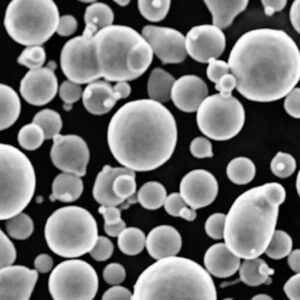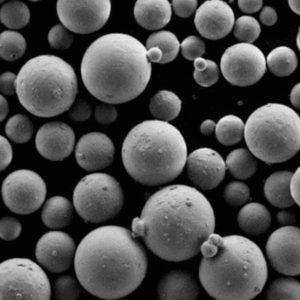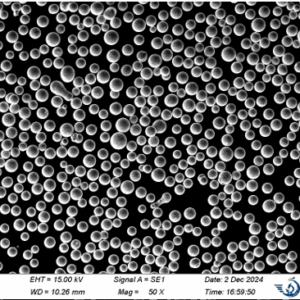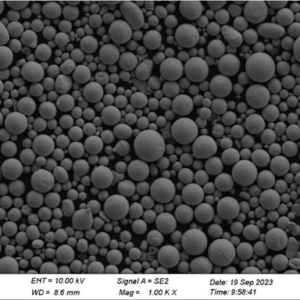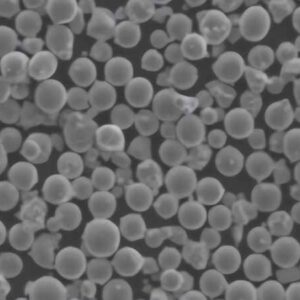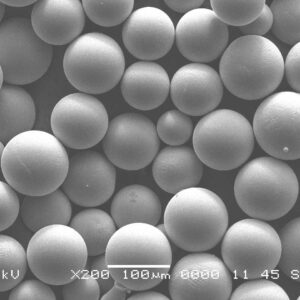In the modern world of materials science, advances in powder metallurgy have led to the development of highly specialized and innovative materials. One such material that has garnered attention is WMoTaNbV powder. This complex alloy, which consists of tungsten (W), molybdenum (Mo), tantalum (Ta), niobium (Nb), and vanadium (V), represents a significant leap in the field of refractory metal powders. If you’re curious about what makes WMoTaNbV powder so special, let’s dive into a deep, detailed discussion of its composition, characteristics, applications, and more.
Overview of WMoTaNbV Powder
WMoTaNbV powder is a high-entropy alloy (HEA) powder, meaning it contains multiple principal elements, typically more than five in near-equal proportions. This powder is designed for use in extreme environments due to its impressive properties such as high melting points, outstanding mechanical strength, and excellent resistance to wear and corrosion.
Key Points About WMoTaNbV Powder:
- Composition: Tungsten, Molybdenum, Tantalum, Niobium, Vanadium
- Type: High-Entropy Alloy Powder
- Properties: High-temperature resistance, wear resistance, oxidation resistance
- Applications: Aerospace, nuclear reactors, cutting tools, and more
- Availability: Various grades and specifications are available from multiple suppliers
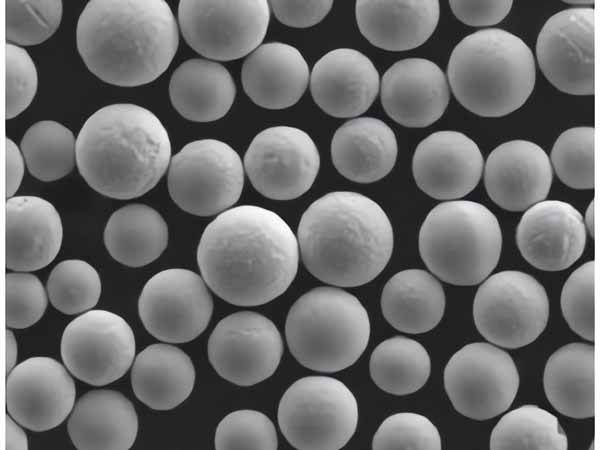
Composition of WMoTaNbV Powder
The unique composition of WMoTaNbV powder combines five different refractory metals, all known for their high melting points and durability in extreme environments. The blending of these metals forms a homogenous material that leverages the best qualities of each element.
| Element | Symbol | Contribution |
|---|---|---|
| Tungsten | W | High melting point, wear resistance, thermal stability |
| Molybdenum | Mo | Enhances hardness and high-temperature strength |
| Tantalum | Ta | Corrosion resistance, excellent conductivity |
| Niobium | Nb | Improves toughness and ductility |
| Vanadium | V | Increases tensile strength and fatigue resistance |
The composition of WMoTaNbV powder is finely tuned to offer balanced mechanical and chemical properties, making it an ideal material for high-performance applications.
Characteristics of WMoTaNbV Powder
The defining characteristics of WMoTaNbV powder set it apart from traditional alloys. These include:
- High-Temperature Stability: The powder maintains its structural integrity and mechanical properties even at extremely high temperatures, often exceeding 1500°C.
- Corrosion and Oxidation Resistance: Thanks to tantalum and niobium, WMoTaNbV powder can withstand harsh environments that would typically corrode or oxidize other materials.
- Superior Hardness and Wear Resistance: With tungsten and vanadium in the mix, this alloy powder exhibits remarkable hardness, making it suitable for cutting tools and wear-resistant coatings.
- Thermal Conductivity: Molybdenum and tantalum provide excellent thermal conductivity, which is critical in applications like aerospace and nuclear reactors.
WMoTaNbV Powder Models
Various models of WMoTaNbV powder are available, each tailored to specific applications and performance requirements. Below are ten different models along with their key properties and recommended uses:
| Model | Description | Key Properties | Applications |
|---|---|---|---|
| WMoTaNbV-01 | Standard grade for general use | High hardness, wear resistance | Cutting tools, dies |
| WMoTaNbV-02 | Enhanced thermal conductivity | Superior heat transfer | Aerospace components |
| WMoTaNbV-03 | High corrosion resistance | Optimal for harsh environments | Nuclear reactors |
| WMoTaNbV-04 | Low oxidation rate | Suitable for high-temperature applications | Furnace components |
| WMoTaNbV-05 | Improved ductility and toughness | Increased flexibility and durability | Aerospace fasteners |
| WMoTaNbV-06 | High precision powder for additive manufacturing | Uniform particle distribution | 3D printing of industrial parts |
| WMoTaNbV-07 | Ultra-high strength | Maximal tensile strength | Structural components |
| WMoTaNbV-08 | Low density version for lightweight applications | Lightweight, strong | Aerospace and automotive |
| WMoTaNbV-09 | Enhanced fatigue resistance | Prolonged lifespan under cyclic loads | Turbine blades, engine components |
| WMoTaNbV-10 | High-purity version for sensitive applications | Minimal impurities, high integrity | Medical devices, electronics |
Each model has its strengths and optimal uses, allowing engineers and designers to select the right material for the job.
Applications of WMoTaNbV Powder
WMoTaNbV powder finds use in various demanding industries where extreme conditions are the norm. Its high-performance characteristics make it an ideal candidate for applications requiring superior mechanical properties and environmental resistance.
| Industry | Applications |
|---|---|
| Aerospace | Jet engines, turbine blades, structural components |
| Nuclear Energy | Reactor components, fuel rod cladding, radiation shielding |
| Tooling | Cutting tools, molds, dies, wear-resistant coatings |
| Medical Devices | Surgical instruments, orthopedic implants, high-precision equipment |
| Automotive | Lightweight components, high-performance engine parts |
| Electronics | High-temperature electronic components, heat sinks |
| Oil & Gas | Drilling tools, exploration equipment, valve parts |
The versatility of WMoTaNbV powder makes it a go-to material in industries that demand longevity and strength in harsh environments.
Advantages of WMoTaNbV Powder
So, why is WMoTaNbV powder increasingly favored in industries like aerospace and nuclear energy? Here are some key advantages:
1. High Melting Point
Compared to many other alloys, the melting points of WMoTaNbV components are exceptionally high, making it ideal for applications exposed to extreme heat.
2. Outstanding Wear and Corrosion Resistance
Thanks to elements like tungsten and tantalum, the powder shows incredible resistance to physical wear and chemical corrosion. This makes it a suitable choice for parts exposed to abrasive environments or chemicals.
3. Superior Mechanical Strength
WMoTaNbV powder provides excellent mechanical strength at both ambient and elevated temperatures. It remains robust under high stress, making it ideal for high-pressure applications such as turbine blades and engine components.
4. Versatile in Application
Whether it’s in aerospace, medical, or electronics, WMoTaNbV powder’s combination of properties enables it to be applied across various sectors, outperforming traditional materials like steel and titanium alloys.
Specifications, Sizes, and Grades of WMoTaNbV Powder
The specifications of WMoTaNbV powder can vary depending on its intended application. Below is a table showcasing some typical sizes, grades, and standards associated with this powder:
| Specification | Details |
|---|---|
| Particle Size Range | 1 – 100 µm |
| Purity Level | 99.5% – 99.9% |
| Standards | ASTM B777, ISO 4498 |
| Available Grades | Industrial, High-Purity, Medical-Grade |
| Packaging | 1 kg, 5 kg, 10 kg bulk |
Different grades and sizes of WMoTaNbV powder are optimized for various uses. For example, medical-grade powders must meet higher purity standards than industrial-grade ones.
Pricing and Suppliers of WMoTaNbV Powder
As with any specialized material, the cost of WMoTaNbV powder can vary widely depending on its composition, grade, and supplier. Below is a breakdown of typical pricing and some notable suppliers:
| Supplier | Grade Offered | Price (per kg) | Location |
|---|---|---|---|
| Supplier A | Industrial-grade | $500 | USA |
| Supplier B | Medical-grade | $1200 | Germany |
| Supplier C | High-purity | $900 | China |
| Supplier D | Custom alloys | $750 | UK |
| Supplier E | Additive manufacturing grade | $1000 | Japan |
The pricing depends heavily on factors like grade, purity, and bulk ordering. Generally, high-purity and medical-grade WMoTaNbV powders are more expensive due to the stringent quality control involved in their production.
Comparing WMoTaNbV Powder to Other Alloys
It’s essential to compare WMoTaNbV powder to other commonly used materials to understand its competitive advantages. Here’s a comparison of WMoTaNbV powder versus conventional alloys like stainless steel, titanium, and nickel-based alloys.
| Alloy | Advantages | Disadvantages |
|---|---|---|
| WMoTaNbV | Higher temperature resistance, better corrosion resistance, superior wear resistance | Expensive, limited availability |
| Stainless Steel | Cost-effective, widely available | Lower temperature limits, prone to corrosion in certain environments |
| Titanium Alloys | Lightweight, good strength-to-weight ratio | More expensive than steel, lower wear resistance |
| Nickel-Based Alloys | Good heat resistance, oxidation resistance | Less wear-resistant compared to WMoTaNbV, more susceptible to corrosion |
Compared to other metals, WMoTaNbV powder offers better performance in extreme conditions, but its higher cost can be a limitation for certain applications.

FAQ
| Question | Answer |
|---|---|
| What is WMoTaNbV powder? | WMoTaNbV powder is a high-entropy alloy powder composed of tungsten, molybdenum, tantalum, niobium, and vanadium, used for high-temperature and wear-resistant applications. |
| What are the main uses of WMoTaNbV powder? | It is primarily used in aerospace, nuclear energy, cutting tools, medical devices, and high-performance automotive parts. |
| Why is WMoTaNbV powder expensive? | The cost comes from the high-purity materials used in its composition, as well as the complex manufacturing process required to produce it. |
| What are the key advantages of WMoTaNbV powder? | Its high temperature resistance, wear resistance, and corrosion resistance make it ideal for extreme environments. |
| Can WMoTaNbV powder be used for 3D printing? | Yes, certain grades of WMoTaNbV powder are specifically designed for additive manufacturing. |
Conclusion
WMoTaNbV powder represents the forefront of material science, offering unparalleled performance in extreme conditions. Its combination of refractory metals gives it outstanding properties, including high temperature resistance, mechanical strength, and resistance to wear and corrosion. While it comes with a higher price tag than traditional alloys, its superior capabilities make it indispensable in industries like aerospace, nuclear energy, and advanced manufacturing. Whether you’re looking for a cutting-edge material for a demanding application or simply exploring the latest innovations in powder metallurgy, WMoTaNbV powder is a material worth considering.

